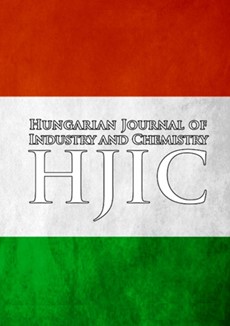Oxidized Mangosteen Peel-Derived Hydrochar for the Removal of Methylene Blue
DOI:
https://doi.org/10.33927/hjic-2025-01Keywords:
adsorption, hydrochar, mangosteen peel, methylene blue, oxidation treatmentAbstract
This work aimed to evaluate the performance of hydrochar and oxidized hydrochars for the removal of methylene blue. Hydrochar was prepared from mangosteen peel, while ammonium persulfate ((NH4)2S2O8), sulfuric acid (H2SO4) and nitric acid (HNO3) were used to oxidize the surface of hydrochars. The performance of pristine hydrochar is better compared to its oxidized counterparts, with a maximum adsorption capacity of 110 mg/g. The adsorption data are well described by Langmuir and pseudo-kinetic models, while the thermodynamic parameters indicate that the process is endothermic and spontaneous. In conclusion, mangosteen peel is a promising feedstock of hydrochar and oxidation treatment may induce a cationic shield that is unfavorable when extracting methylene blue from water.




